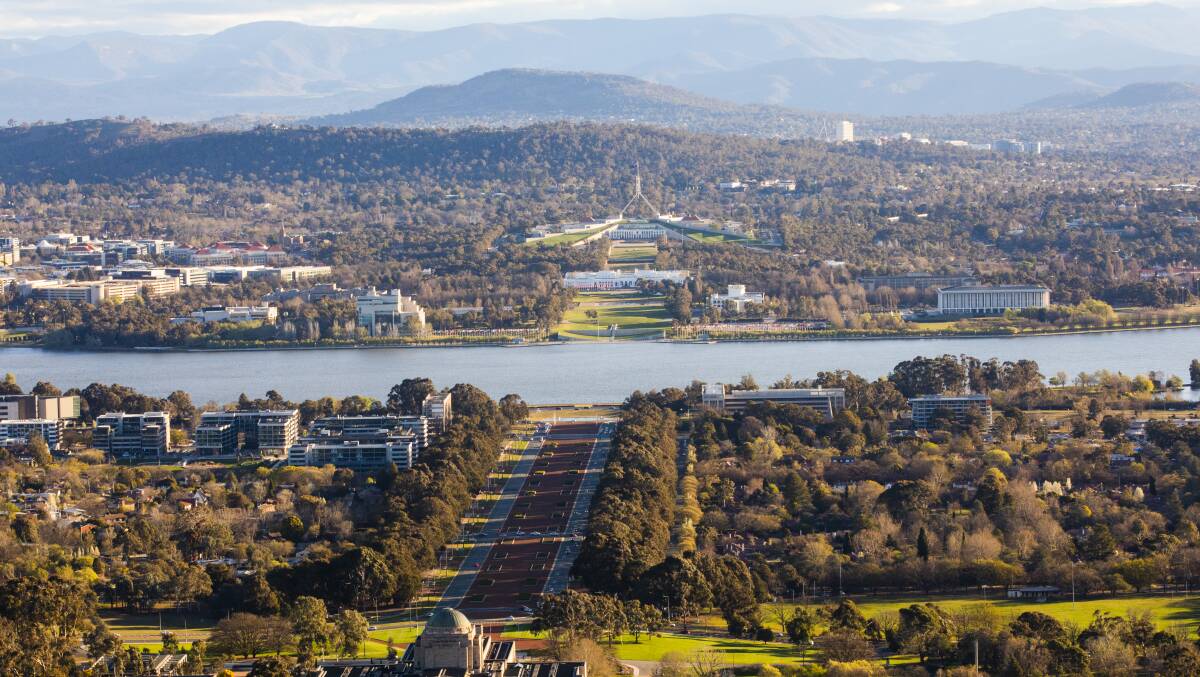
A permanent monument to Indigenous peoples should be built next to Lake Burley Griffin in recognition of their contribution to the modern Australian nation, academic and journalist Mark Kenny has said.
Subscribe now for unlimited access.
$0/
(min cost $0)
or signup to continue reading
The waterside building would celebrate Australia's First Nations and house a museum of Indigenous art and history on the lake's southern edge.
Professor Kenny, delivering the Henry Parkes oration at Old Parliament House on Monday evening, said the monument should tell of the violent dispossession of Indigenous peoples and its long tale of disadvantage.
"I propose, in full consultation and genuine partnership with Tent Embassy residents, community elders and First Nations peoples, that the institutional axle point of modern Australia's great story, be marked with a truly monumental structure dedicated to and run by Australia's First Peoples.
"Aboriginal Australia has waited long enough for this material recognition," he said.
Failure to recognise Indigenous peoples in laws, culture and history had made the nation emotionally blocked and unable to face its past, the Australian National University professor said.
Professor Kenny proposed selecting a monument design from an architectural competition, in the spirit of nationally-significant building projects such as Canberra itself.
"I'd envisage a vast and largely lateral structure, rising from beneath the shoreline of Lake Burley Griffin," he said.
The museum could house an interpretive centre, and a ferry wharf would allow tourists and scholars to travel across the lake from Acton and Canberra's city centre.
A monument would mark the foundational contribution of Indigenous nations to the modern Australian nation, and complete the symbolic axis between the Australian War Memorial and the new Parliament House in Canberra, Professor Kenny said.
"This museum would proclaim a new era of partnership via a grand symbolic gesture in the form of a permanent water's edge museum of Indigenous history, language, art, and political struggle."
READ MORE:
He predicted there would be opponents who argued spending on the monument would be better directed to improving the health and education of disadvantaged Indigenous communities.
However those critics were happy to spend an "obscene" amount on the Australian War Memorial expansion, which would cost $500 million and could become more expensive, Professor Kenny said.
"Here's an idea, stop that hotly contested extravagance and put that half-a-billion dollars into addressing Indigenous disadvantage," he said.
"Or perhaps just accept that you do value symbolism (such as the War Memorial) and then consider which is the more justified - a proper, permanent recognition of Indigenous Australia's long-denied history and more recent systematic abuse, or an even bigger war museum."
Professor Kenny said spending on the War Memorial expansion, and a failure to discuss a monument to First Nations peoples, reflected on the nation.
"It says that this is a piece of history that is not valued, not legitimate, does not conform to our sense of ourselves," he said.
"By the same token, Australia is a lesser nation, a weaker society, for the denial of proper recognition and meaningful reconciliation with this land's first peoples - the oldest continuing civilisation on Earth."


